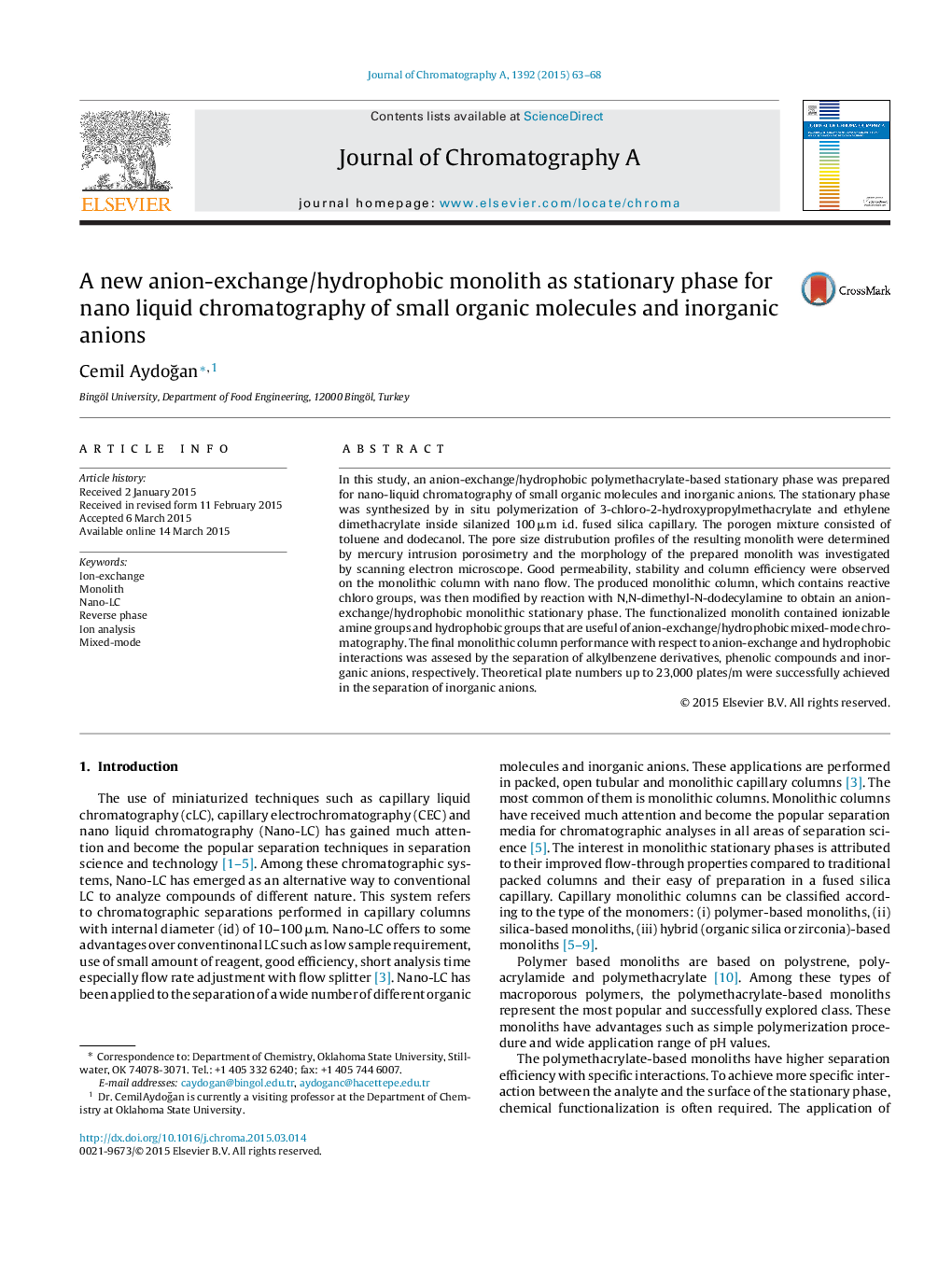| کد مقاله | کد نشریه | سال انتشار | مقاله انگلیسی | نسخه تمام متن |
|---|---|---|---|---|
| 1201558 | 1493534 | 2015 | 6 صفحه PDF | دانلود رایگان |
• The preparation of a novel polymer-based capillary monolith for nano-LC.
• The use of HPMA-Cl as a reactive monomer.
• The characteristic behaviours of the monolithic capillary column with DMDA functionalization.
• The optimization of separation of small organic molecules and inorganic anions.
In this study, an anion-exchange/hydrophobic polymethacrylate-based stationary phase was prepared for nano-liquid chromatography of small organic molecules and inorganic anions. The stationary phase was synthesized by in situ polymerization of 3-chloro-2-hydroxypropylmethacrylate and ethylene dimethacrylate inside silanized 100 μm i.d. fused silica capillary. The porogen mixture consisted of toluene and dodecanol. The pore size distrubution profiles of the resulting monolith were determined by mercury intrusion porosimetry and the morphology of the prepared monolith was investigated by scanning electron microscope. Good permeability, stability and column efficiency were observed on the monolithic column with nano flow. The produced monolithic column, which contains reactive chloro groups, was then modified by reaction with N,N-dimethyl-N-dodecylamine to obtain an anion-exchange/hydrophobic monolithic stationary phase. The functionalized monolith contained ionizable amine groups and hydrophobic groups that are useful of anion-exchange/hydrophobic mixed-mode chromatography. The final monolithic column performance with respect to anion-exchange and hydrophobic interactions was assesed by the separation of alkylbenzene derivatives, phenolic compounds and inorganic anions, respectively. Theoretical plate numbers up to 23,000 plates/m were successfully achieved in the separation of inorganic anions.
Journal: Journal of Chromatography A - Volume 1392, 1 May 2015, Pages 63–68
